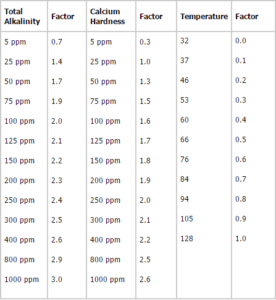
When it comes to having the right balance of water with all the chemicals mixed in, at PoolButler4 we make sure that your pool is set to the most optimal and usable condition.
Maintaining the proper water chemistry in your swimming pool is the most crucial element to ensuring safety, health, and optimal swimming conditions. Balancing pool chemicals such as how much salt is added to the pool to maintain and reach the most suitable chemical elements which include pH, chlorine, alkalinity, and calcium hardness within the recommended ranges.
Before you get started, make sure the pool water is ready for testing and balancing, check that the water level is halfway up the mouth of the skimmer, and add more if it’s required.
Next, turn the pool pump on and make sure that it’s running properly, if you have a variable-speed pump, run the pump at high speed. It is not possible to measure water chemistry in stagnant water, also attempting to balance a pool that is not circulating properly damages pool surfaces. Make sure the pool filter is clean before you go to the next step.
To know how properly to dose your pool, you first need to know how many gallons of water your pool stores, if you don’t know it already, then just do a simple calculation to get a close estimate. First and foremost, find the cubic footage of your pool then multiply that number by 7.5 to find your pool volume in gallons.
Before you balance your pool water, you need to have a brief understanding of your pool’s chemistry and test the water using a home pool water test at least two or three times each week. Then, once a month bring in your sample water for an in-depth professional water analysis which is for free! Most home tests only a few aspects of water chemistry, such as Chlorine, pH, Total Alkalinity, and Calcium Hardness.
When adjusting the chemistry in your swimming pool, it is important to add chemicals in a certain order, some aspects of water chemistry affect the balance or the efficiency of others, and also, some chemicals need time to circulate properly before adding chemicals in the water.
Otherwise, you may end up with an inadvertent chemical reaction that’s dangerous for you and/or damaging to your pool. By sticking to a routine water balancing format, you’ll keep your water clean, clear, sanitary, and safe.

You might not change the water in your pool for many many years, but a continuous filtration system removes all the contaminants which keeps the water enjoyable but this does not balance the water in your pool. A pool that is called “balanced” has the most adequate pH levels, Alkaline levels, and Calcium Hardness. The most optimal mixture is as below
pH is a measure of how acidic or basic the water is, pH is a logarithmic scale that ranges from 0-14, with 7 being the most optimal and neutral. Below 7.0, a substance is considered as being acidic while the levels above 7 are said to be the basic or core level of alkaline. To have the most balanced pH level, we usually adjust the water with additions such as pH increasers or pH decreasers to achieve the most beneficial range of 7.2-7.6 or 7.4 to keep it for the best setting.
When we are speaking about the scale, we are usually referring to calcium carbonate which comes out of solution and deposits itself on a surface. It is a combination of carbonate ions, a part of total alkalinity and calcium, and a part of Calcium hardness level.
The test for calcium hardness is a measure of how “hard” or “soft” the water is to be able to use it. If these water levels are way too hard it will throw excess particles out of the solution which then seek to embody themselves on almost any surface within the pool.
If the calcium hardness is too low, water is considered to be under-saturated. If the water becomes too under-saturated the water will be more aggressive as then it attempts to get the calcium that it needs. Such “Soft Water” is likely to corrode more inside the pool with other minerals.
The recommended range for calcium hardness is 180-220 ppm, or some say 200-400 ppm, also it’s highly advised to do a calcium hardness test every week.
The saturation index is also known as the Langelier Index, to calculate the saturation index you need to test a few things such as pH level, temperature, hardness, and alkalinity readings then add these to your pH value. A result between -0.3 and +0.3 is said to be the most balanced water.
To have a better understanding of the index, make sure you go through the saturation index below.

Cyanuric acid levels fluctuate much less than chlorine to maintain a 20-40 ppm range. Cyanuric acid levels should be diluted by 50 ppm, which is the draining portion of pool water and refilling it with unstabilized water.
To have a complete guide on how to clean your pool, make sure you go through our blog to have a brief overview about some basic understanding and knowledge about how can you make your pool more neat and clean.
Once the pool has been balanced and sanitized, take a deep analysis of the water, if your pool looks anything else than clear and sparkling, consider using a clarifier to brighten things up a bit. Clearing it up makes it a lot easier for your pool filter to remove it from the water, regular applications help boost both, filtration and sanitizer efficiency.